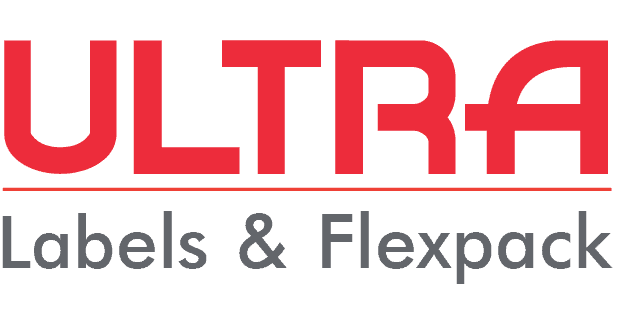We are witnessing a tremendous global shift towards finding a more sustainable way of living on planet earth.
Governments and the business sector are charged with fulfilling current consumer demand while also ensuring we don’t compromise future generations’ ability to meet their own needs.
Minimising your carbon footprint and embracing sustainable business practices is a multifaceted proposition. One key strategy involves examining upstream and downstream supply chain partners to test for alignment on environmentally friendly solutions.
When assessing your labelling and packaging supply chain partner, it’s essential to understand their sustainable business practices and print technologies. Do they primarily use digital or conventional printing presses? And which is the more sustainable option?
The growing focus on sustainability
Consumers value sustainability. In 2021 sustainably manufactured products grew 2.7 times faster than traditional goods, despite premium pricing.
Moreover, a recent survey revealed that consumers expect companies to be engaged in sustainable business practices. 90% of people questioned said they believe brands are responsible for protecting the planet.
These shifts in consumer preferences are driving a transition from our linear ‘take, make and waste’ economy towards a circular economic model. Consequently, there is a growing awareness of the detrimental environmental effects of packaging waste.
All trends in consumer preferences, regulations, and government actions indicate that packaging is a fundamental focus for sustainability effort.

Sustainable printing practices in the supply chain
Labelling and packaging choices have a tangible impact on the sustainability of your business’s supply chain.
Without a doubt, printing on paper products can have negative impacts on our environment in terms of pollution, deforestation, water and energy use. Unsurprisingly, the packaging industry has been one of the first to respond to the call for upstream innovation to offer environmentally friendly solutions.
Improved technologies in conjunction with a genuine commitment to sustainable practices enables printers to minimise or offset adverse environmental effects.
Some essential points to consider when assessing your printer as an environmentally responsible supply chain partner are:
- Do they have a documented and readily available environment or sustainability policy?
- Have they attained recognised environmental certifications, such as ISO 14001?
- Do they hold and promote environmentally friendly stock and material options?
- Are the inks primarily used petroleum-based?
- Do they have local manufacturing plants, or are your orders transported over long distances?
- Do they work to minimise and manage waste products in an environmentally responsible manner?
- Do they utilise renewable sources of power?
- Do they primarily use digital or conventional print technology?
The environmental benefits of digitally printed labels and flexible packaging
Digital print technology can reduce “supply chain waste by up to 26% and cut carbon footprint by 65-80%. Therefore, a printer with digital print capabilities will be a more eco-friendly choice of supply chain partner over printers that rely on traditional print methods.
Here are the key reasons digital printing is a better choice in your pursuit of becoming a more sustainable brand.

Digital printing enables smaller print runs
First and foremost, the smaller print runs made possible by digital print technology work to reduce oversupply, obsolescence and packaging waste.
Offset and flexographic printing require large print volumes to achieve viability and cost-effectiveness. Proportions of stock are then stored until needed - unless, of course, they’re not. A regulation or ingredient change can render pallets of labels or packaging useless and therefore landfill.
Digital printing allows businesses to order smaller volumes, on demand, saving money on printing and storage costs, and minimising the risk of oversupply and waste.

Digital printing produces less waste
We touched on it before, but digital printing offers exponential benefits in terms of wastage. Firstly, by printing less, there’s less to be wasted.
Conventional printing technologies, such as offset and flexographic printing, use inked plates and cylinders to transfer the images onto the printing surface. Once the design is no longer required, these plates and cylinders are discarded.
Digital printing uses computer technology to transfer images to the press, and specially developed inks then print the images on the stock or material. This simplified process is not only much faster but significantly reduces wasted byproducts.

Digital printing uses fewer toxic chemicals
Traditional printing processes use a cocktail of harmful chemicals, including toxic inks. Strong solvents are also required to clean the printing presses of inks between jobs.
Digital printing does use some chemicals, but much less of them. Less ink is required for each job, and HP Indigo ElectroInks contain no mineral oils, comply with the EU REACH standard for chemicals, and are certified by Interteks’s Green leaf.
Furthermore, HP Indigo ElectroInk enables products printed on an HP Indigo digital press to be deinked, recycled and even composted.

Digital printing uses fewer resources
The digital printing process is more efficient than traditional printing as it uses less paper product, less ink, less energy and less water. Waste prevention, also known as source reduction, eliminates waste before it is created and is one of the highest priorities for sustainable waste management models. Source reduction positively impacts the whole supply chain as it conserves finite natural resources, reduces energy consumption and emissions, and extends valuable landfill space.
HP Indigo: Our sustainable supply chain partner
In 2009, Ultra opened its doors with an HP Indigo 6000. Today, we have eight HP Indigo Digital presses, including our latest acquisition, the HP Indigo 20K Digital Press.
HP Indigo is the market-leading manufacturer of commercial digital printing presses and advocates of a circular economic model. They’re aim is to be the world’s most sustainable and just tech company.
We partner with HP Indigo as they deeply understand the printing industry’s significant role in assisting downstream partners to be more sustainable.
In addition to all the environmental benefits of digital versus conventional printing discussed, our HP Indigo digital presses are manufactured carbon-neutral. We use non-toxic HP Indigo ElectroInks, and our presses are tested to ensure that bio-based and environmentally friendly media print efficiently.
We also recycle used imaging consumables, such as metal and plastic ink canisters, through the HP Planet Partners Program. This initiative, run by Close the Gap, commenced in 2018 and has already saved 58 tonnes of ink canisters from becoming landfill and remanufactured over 19 tonnes of Indigo binary ink developers.
Finding the right printing partner for your business
Finding a printing partner aligned with your sustainable goals is important. Digital printing offers flexibility, is cost-effective, and allows your business to leverage environmental benefits into your supply chain. As a responsible supply chain member, we are mindful of our responsibilities to the environment as well as our supply chain partners and continuously improve our sustainable credientals through ongoing investment.
Let our experts work with you throughout the printing process and help you find the perfect labelling or packaging solution that doesn’t cost the earth.



